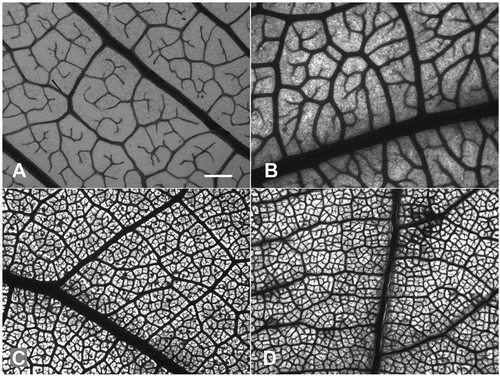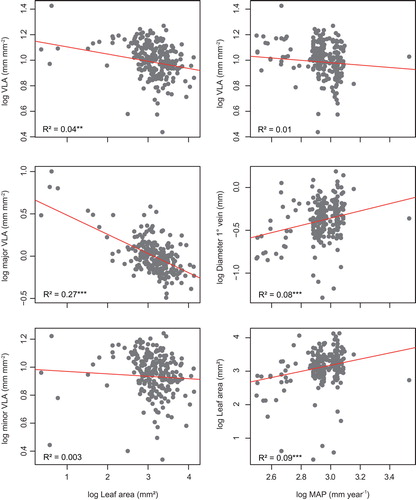Figures & data
Figure 1. Minor vein architecture of representative specimens with low (A,B) and high vein densities (C,D). (A) Pentadesma butyracea, (B) Drypetes gilgiana, (C) Stereospermum kunthianum, (D) Ziziphus mucronata. Bar = 500 μm (all at same magnification).

Figure 2. Relationships of vein density (VLA, major VLA, minor VLA) with leaf area, and of VLA, 1° diameter, and leaf area with MAP based on PGLS.

